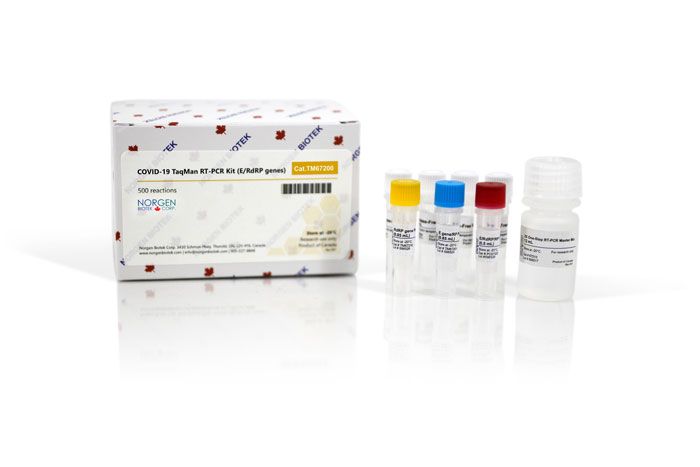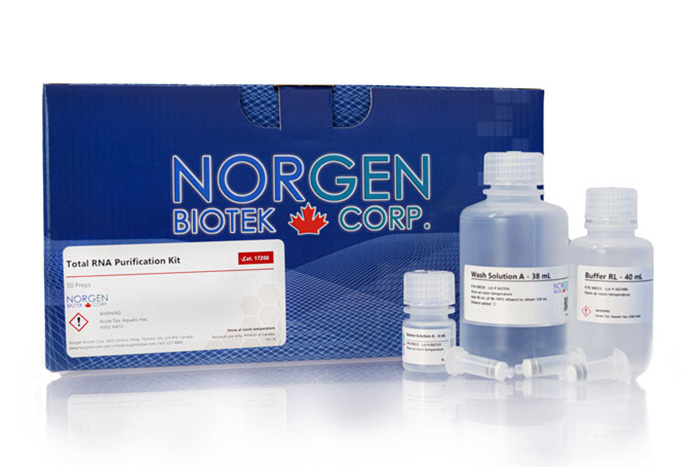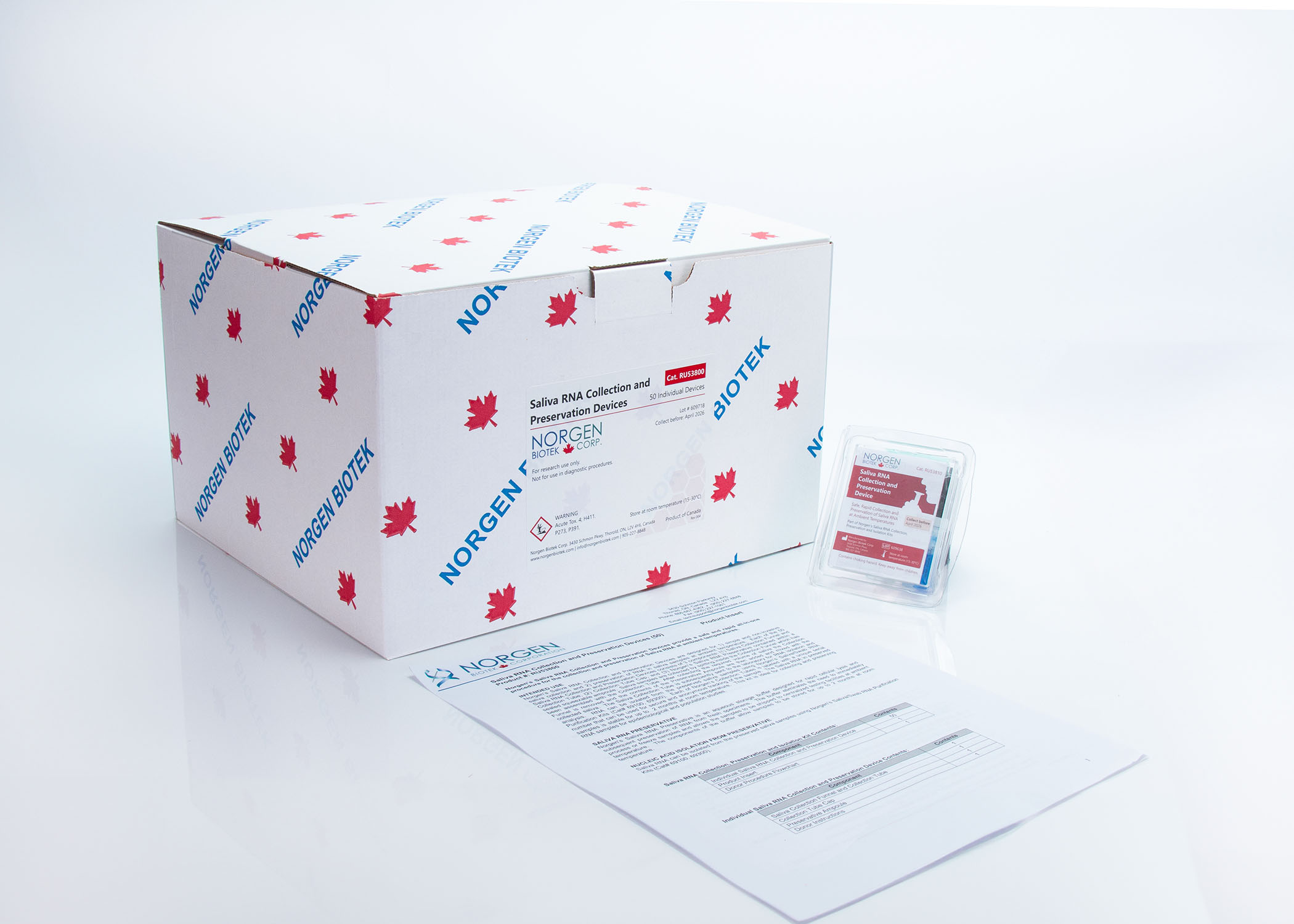COVID-19 TaqMan RT-PCR Detection Kit (E/RdRP genes)

For research use only and NOT intended for in vitro diagnostics.
COVID-19 TaqMan RT-PCR Detection Kit (E/RdRP genes)
Register today to receive an exclusive 15% off* on your first order.
Features and Benefits
- SARS-CoV-2 detection based on the Charité/Berlin protocol (E/RdRP genes) recommended by WHO.
- Primer & Probe Mixes contain all E gene/RP and RdRP gene assays in individual tubes
- All assays are premixed to the working concentrations recommended by the Charité/Berlin protocol.
- Positive Control contains the three SARS-related target genes: E gene, RdRP gene as well as the human RP (internal control).
- Includes our convenient ready-to-use 2X One-Step RT-PCR Master Mix
- Manufactured under ISO 13485:2016 for research use only
- CE-IVD marked version available
- Find out more information about our complete COVID-19 workflow
67200 TM67200 CDC 67200 TM67200 CDC 67200 TM67200 CDC
Norgen’s COVID-19 TaqMan RT-PCR Kit (E/RdRP genes) is a multiplexed assay designed for simple, reliable and rapid qualitative detection of SARS-CoV-2 specific RNA using TaqMan® technology (FAM and HEX/VIC). The kit includes 2x One-Step RT-PCR Master Mix and 2 primer/probe mixes, a positive control and a negative control (nuclease-free water). The first primer/probe mix is the E gene/RP that targets the SARS-CoV-2 – specific Envelop gene (E gene - FAM) in addition to the human RNase P transcript (RP - HEX/VIC) as an internal control target to monitor for PCR inhibition, and to validate the quality of the sample and the detection result. The second Primer/Probe Mix is for the RdRP gene and detects two RNA-dependent RNA Polymerase (RdRP) targets where the first RdRP target is SARS-CoV-2 specific (FAM) while the second RdRP target is to detect SARS-CoV and bat-SARS-related CoVs (HEX). The use of the second RdRP gene Primer/Probe Mix is only required as a discriminatory/confirmatory step with samples showing positive amplification of the E gene. The provided E gene/RdRP/RP Positive Control contains an in vitro RNA transcript for the three SARS-related target genes: E gene, RdRP gene as well as the human RP (internal control).
Background Information
In December 2019, an outbreak of respiratory illness started in Wuhan City, Hubei Province, China and has now spread throughout the world to many different countries. This respiratory disease was caused by a novel coronavirus and was initially termed “2019 novel coronavirus” or “2019-nCoV”, however in February of 2020 the World Health Organization (WHO) announced that the official name of the disease is COVID-19. The official name of the coronavirus causing COVID-19 is SARS-CoV-2.
SARS-CoV-2 is a new strain of coronavirus infecting humans that had not been previously detected before the outbreak in China in December 2019. While SARS-CoV-2 is new, many coronaviruses have been known to infect animals and humans for some time. Coronaviruses are known to commonly infect camels, cattle, cats, and bats. In humans, Coronavirus infections can cause various illnesses from the common cold to more severe diseases such as Middle East Respiratory Syndrome (MERS) and Severe Acute Respiratory Syndrome (SARS).
Human infection is more severe when the coronavirus has originated in animals and spread to humans, as is the case with MERS and SARS. SARS-CoV-2 is a betacoronavirus, similar to MERS and SARS, both of which have their origins in bats. The animal source of SARS-CoV-2 has not yet been identified, however Chinese officials have linked many of the early cases to a large seafood and live animal market, suggesting that the initial transmission was the result of animal-to-person spread. However, many of the later detected cases did not report any exposure to animal markets, indicating that the virus is now spreading via human-to-human contact.
Symptoms of infection with SARS-CoV-2 can range from milder symptoms such as a runny nose, sore throat, cough, and fever to more severe symptoms including pneumonia or breathing difficulties. In some cases, infection with SARS-CoV-2 has resulted in death. As with other respiratory illnesses, older people and individuals with pre-existing medical conditions (such as diabetes or heart disease) are more vulnerable to becoming severely ill with the virus.
Details
Supporting Data
Figure 1. Duplex TaqMan RT-PCR analytical sensitivity for each of the SARS-CoV-2 targets based on the Charité/Berlin protocol. The analytical sensitivity was determined by analyzing six serial dilutions (200,000 copies to 2 copies) of Norgen's positive control from the COVID-19 TaqMan RT-PCR Kit (E/RdRP gene)(Cat. TM67200). Five µL of template was used in a 20 µL of the one-step RT-PCR reaction and the arrow indicates a copy number of 10.
Figure 2. The analytical specificity of Norgen’s COVID-19 TaqMan RT-PCR Kit (E/RdRP gene)(Cat. TM67200) was evaluated by testing a panel of RNA from related pathogens. Oropharyngeal swabs were collected from healthy donors and were spiked with RNA from each pathogen. Total RNA was then purified using Norgen's Total RNA Purification Kit (Cat. 17200). A one-step RT-PCR for detection of the four targets was performed using Norgen’s COVID-19 TaqMan RT-PCR Kit (E/RdRP gene) (Cat. TM67200). Norgen’s COVID-19 TaqMan RT-PCR Kit (E/RdRP gene) (Cat. TM67200) did not cross-react with any of the specified organisms.
Figure 3. Clinical testing of the COVID-19 TaqMan RT-PCR Kit (E/RdRP gene)(Cat. TM67200) was conducted with contrived oropharyngeal swabs (circle) and nasopharyngeal swabs (cross). Swab samples were collected from healthy donors and placed into preservative using Norgen’s Total Nucleic Acid Preservation Tubes (Cat. 69200). To prepare the contrived positive samples, the preserved swab samples were spiked with 100,000 copies of positive control. Total viral RNA was then isolated using Norgen’s Total RNA Purification Kit (Cat. 17200). Following RNA isolation, one-step RT-PCR for detection of the four targets was performed using Norgen’s COVID-19 TaqMan RT-PCR Kit (E/RdRP gene) (TM67200).
Storage Conditions and Product Stability
All kit components should be stored at -20°C upon arrival. Repeated thawing and freezing (> 2 x) of the Master Mix, Control Master Mix and Positive Control should be avoided, as this may affect the performance of the assay. If the reagents are to be used only intermittently, they should be frozen in aliquots. All reagents can be stored for 6 months at -20°C without showing any reduction in performance.
| Component | Cat. TM67200 (50 preps) | Cat. TM67240 (500 preps) |
|---|---|---|
| E gene/RP Primer & Probe Mix | 850 μL | 80 μL |
| RdRP gene Primer & Probe Mix* | 850 μL | 80 μL |
| E/RdRP/RP Positive Control † | 500 μL | 50 μL |
| 2X One-Step RT-PCR Master Mix | 12 mL | 1 mL |
| Nuclease-Free Water (Negative Control) | 4 x 1.25 mL | 1.25 mL |
| Product Insert | 1 | 1 |
* Confirmatory/Discriminatory assay.
† Contains an in vitro RNA transcript for the three SARS-related target genes: E gene, RdRP gene as well as the human RP (internal control).



